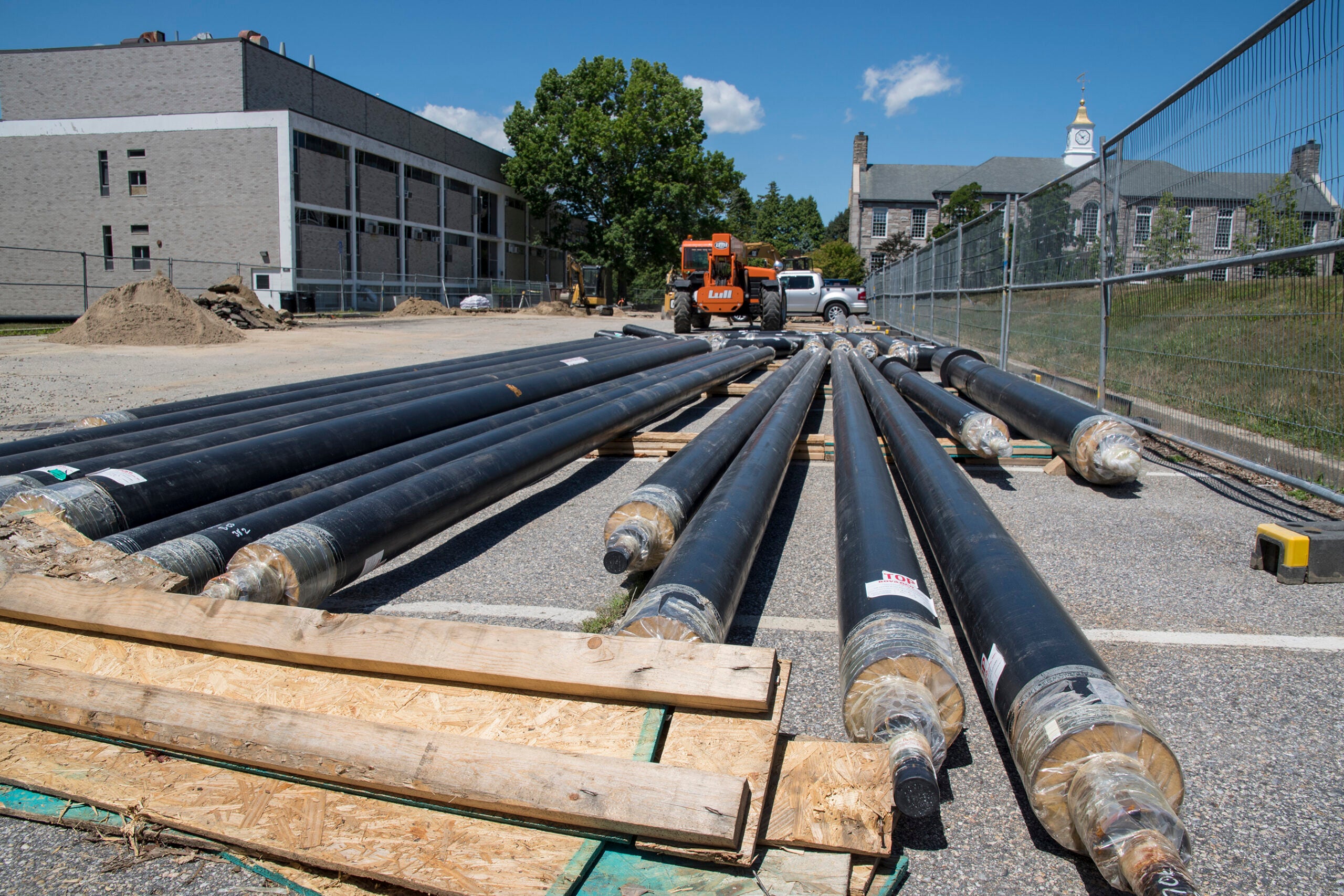KINGSTON, R.I. — October 3, 2018 — Since 2006, the University of Rhode Island has saved 11 million kilowatt hours of energy, reduced annual steam consumption by 89 million pounds and reduced carbon dioxide emissions by almost 26 million pounds. Such achievements are being recognized nationally.
The U.S. Department of Education earlier this year named the University of Rhode Island a 2018 Green Ribbon School. The University received the Postsecondary Sustainability Award, and it is the only university or college in New England to be selected for a Green Ribbon honor. Earlier this year, the Princeton Review named URI among the nation’s greenest colleges for the eighth straight year.
“The University is strongly committed to sustainability, and has made outstanding progress in reducing greenhouse emissions and solid waste streams,” said Vice President for Administration and Finance Abigail Rider. “We are deeply honored to be named a Green Ribbon School, and we continuously evaluate and implement additional improvements which increase our sustainability. ”
A year-long project was recently completed to replace the campus’ exterior lights with about 1,900 high-efficiency, light-emitting diode (LED) lamps and accompanying fixtures to limit the spread of light. In addition to the enhanced lighting, the fixtures provide a standardized, clean look across campus. The only fixtures that weren’t replaced are those in historic campus areas that mimic light poles of earlier eras. However, the lights themselves have been replaced with LED units.

The Division of Finance and Administration and its Business Services Department, Facilities Services Department, Office of Capital Projects, Department of Campus Planning and Design and Office of Sustainability have been aggressively pursuing energy-savings measures University-wide for more than a decade.
The latest light project eliminated all high-pressure sodium units, which caused an orange glow, and metal halide lights, both of which are less efficient than LED lamps. All of the walkways, roads and exteriors of campus buildings are now illuminated with LED lights.
“With our old fixtures, light was not distributed efficiently, but now we have concentrated it where we need it,” said David Lamb, assistant director of Facilities. “The new fixtures are designed to distribute light better, reducing light pollution.”
As part of the project, the University also received an incentive from National Grid to replace the lighting in building stairwells with sensor-equipped LED lights. When no one is in the stairwells, the sensors dim the lights to save energy. When someone is there, the lights return to full power.
Major unseen improvements
Another major facilities upgrade was the installation of thermal insulation to the traps, valves and strainers located in the mechanical rooms of the University’s steam system. Until new technology was developed, it was difficult to insulate this equipment, but Lamb said all of it is now wrapped in removable and reusable Kevlar-like materials.
Lamb said 2,000 steam fittings in up to 50 buildings were insulated. Because of the insulation, classrooms and residential living quarters near this equipment are more comfortable.
“We project these steam system improvements will save about 8 to 10 percent in annual energy costs by reducing our natural gas consumption, which reduces our carbon emissions as well,” Lamb said.
His team also replaced 800 feet of 40-year-old steam line near Bressler Hall and the Memorial Union. That bare pipe was replaced with a state-of-the-art insulated line.
And because the University is recovering its costs through less consumption of natural gas and electricity, it is moving to install air conditioning in Edwards Hall, the University’s historic venue for major lectures and other programs.
“Edwards Hall is a beautiful, historic building that welcomes thousands of visitors each year, and once we complete this project, Edwards will be beautiful and comfortable year round,” Lamb said.
During the summer, the University replaced an additional 1,000 feet of uninsulated steam line with state-of-the-art insulated steam line between Green Hall and Fogarty Hall.
Next up, is the replacement of 54,000 interior lights on the Kingston campus with LED units, installation of plug load management technology and software to provide energy savings on window air conditioners and other ancillary equipment during unoccupied hours.
While all of these are important projects, Lamb stressed the importance of individual actions. “We are doing system-wide improvements, but equally important are steps individuals can take, like shutting off lights when not in a room, turning the temperature up on your air conditioning, turning down the heat, and calling for service when it’s too hot in your room, office or classroom instead of opening a window in the dead of winter.”

